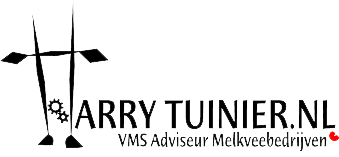Checking recently calved cows.
This website has often been tipped off about paying attention to fresh cows.
In addition to regularly doing the 2-Minute Check, it is also good to sort daily in the Status list by DIL (Days In Lactation). Then the newly calved cows at the top. You can immediately see whether the expected milk yield was -far- above 100% at the last milking.
When you open the animal card by double-clicking the top cow and open the “Milking” tab, choose “Yields” and then “Blood and Conductivity” (At least for the last 7 days + today), you will immediately see when was her last milking, how often she is coming to the VMS already and whether all teats are milked properly, how the conductivity is going and whether the blood values are dropping nicely.
With the green arrow (next to printpreview, printer and page setup) you can go to the next cow that you have sorted by DIL.






